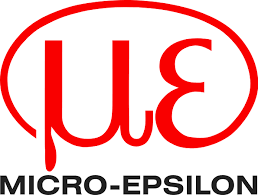The reflectCONTROL Automotive automatic paint defect inspection system has experienced a worldwide breakthrough with key automotive groups. The inspection of shiny surfaces is carried out in a safe, fast and effortless manner with this system. It is possible to reliably recognize small defects inline, from a complete chassis to a single painted part, enabling 100% control.
reflectCONTROL Automotive System
Top carmakers depend on established paint defect inspection using the reflectCONTROL Automotive system. In its Sindelfingen plant, Daimler depends on robot-based solutions for automatic paint defect inspection and marking. There, all models (up to 1,800 vehicles per day in three parallel lines) are inspected based on strict criteria by Daimler and marked for processing. In addition, carmaker BMW also places its trust in systems from Micro-Epsilon even though it has already ordered the second system for its factory in Munich. reflectCONTROL Automotive has also recently crossed the Atlantic: from now on, Honda has decided to go in for high-tech from Germany in its new paint shop in Marysville, Ohio.
.jpg)
PR394 reflectCONTROL Automotive
Extremely high requirements are being placed on quality assurance especially in the automotive industry. Traditional approaches of image processing have rapidly reached their limits due to highly reflective surfaces. Here, a tailor-made solution is provided by the reflectCONTROL Automotive system. All systems are available with custom designed, robot-based sensors. Robots enable a flexible adaption of the measurement procedure to varied shapes of bodywork, all bodywork areas are identified with equally high detection performance. The system is integrated into the processing line. When it comes to installations in Greenfield and Brownfield plants, Micro-Epsilon provides experienced guidance and advice. Resolutions in the range of tenths of a millimeter enable the precise detection of almost all defects in the top coat and base paint in a three-dimensional form and position on the bodywork surface such as craters, scoring, paint drops, fluffs or inclusions. The sensitivity in the third dimension (height, depth of the defect) is in the sub-micron range. It is possible to set up different model types with appropriately trained personnel by using mature supporting software.
The measuring principle is based on the phase-shifting deflectometry principle which is similar to that of the human eye. A light source incorporated in the sensor produces an alternating striped pattern with sinusoidal intensity onto the vehicle. Defects lead to deviations in the striped pattern which is mirrored by the surface, recorded by cameras and the analyzed by software. The assessment of several single frames enables a concise surface representation that is examined for deviations from the ideal surface using robust algorithms.
Robot-Guided Defect Detection
Robot-guided defect detection, compared to visual inspection, provides significantly more precise, consistent results. Field experience highlights a major reduction of defect slippage in the downstream processes, while issues such as daily mood swings, color dependency or tiredness no longer have any influence. The detected data can also be used further, example, for monitoring tasks, to optimize previous production processes and to reveal sources of errors, or for a marking robot that automatically marks the defects for subsequent repairs or rework.

This information has been sourced, reviewed and adapted from materials provided by Micro-Epsilon.
For more information on this source, please visit Micro-Epsilon.